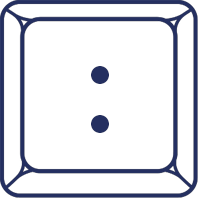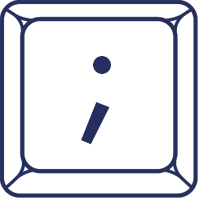
People frequently make mistakes with commas. Often people put them in where they think there should be a natural break in the writing, or where you might ‘take a breath’. This method doesn’t always work and can lead to problems. This is because using commas incorrectly, or not using them at all, can affect the clarity of your writing. Therefore, it is worth investing some time to learn how to use commas.
Here are six instances when you can/should use commas:
1. Separating Items in a List
Example - 'The survey indicated that there is a need for increased funding, a larger team and more work space.'
2. Before Coordinating Conjunctions
Coordinating conjunctions include words like ‘and’, ‘but’, ‘or’, ‘so’ and ‘nor’. You can use a comma before these, but this is not compulsory.
Example - 'The weather conditions for the field work were less than ideal, but it was decided we should go anyway.'
3. After Transition Words at the Start of a Sentence or Independent Clause
Examples of transition words include ‘however’, ‘furthermore’ and ‘additionally.’
Example - 'However, there have been a number of promising developments in recent years.'
4. Before and After Additional Information in the Middle of a Sentence
Example - 'The lead researcher, who worked tirelessly on the project, won an award for innovation.'
5. When Introducing Direct Quotes
Example - 'As Jones (2012) notes, ‘there was no clear consensus from the government about what direction to take’.'
6. Between Dependent and Independent Clauses
This will be needed when you use a subordinating conjunction such as ‘although’, ‘despite’, ‘in spite of’, ‘while’ and ‘before’; when you have a participle phrase; or when you use a relative pronoun to start a non-restrictive dependent clause.
An example with a subordinating conjunction is as follows:
'Although I have never been to Scotland, I have a good understanding of its geography.'
You can also reverse this, as in the sentence below:
'I have a good understanding of the geography of Scotland, although I have never been.'
An example with a present participle (verb + ‘ing’) is as follows:
'The ‘approaches to learning’ section starts with some background information, introducing the key publications used to support the rest of the paper.'
An example with a relative pronoun is as follows:
'The results indicated the predictions were accurate, which is a useful outcome for the project.'
7. After an Adverbial Phrase at the Start of a Sentence.
An adverbial phrase adds more information about what is being done, such as where or when.
Example – 'Tomorrow evening, we will start our trip.'
A comma is not usually needed if the adverb at the start of the sentence is only one word (e.g. yesterday).
Common Errors with Commas
Visit our 'Common Errors in Grammar' guide, and look at sections 2, 3 and 12 to find out more about common errors in comma usage like Comma Splices, Run-On Sentences, and Misplaced or Omitted Commas.




